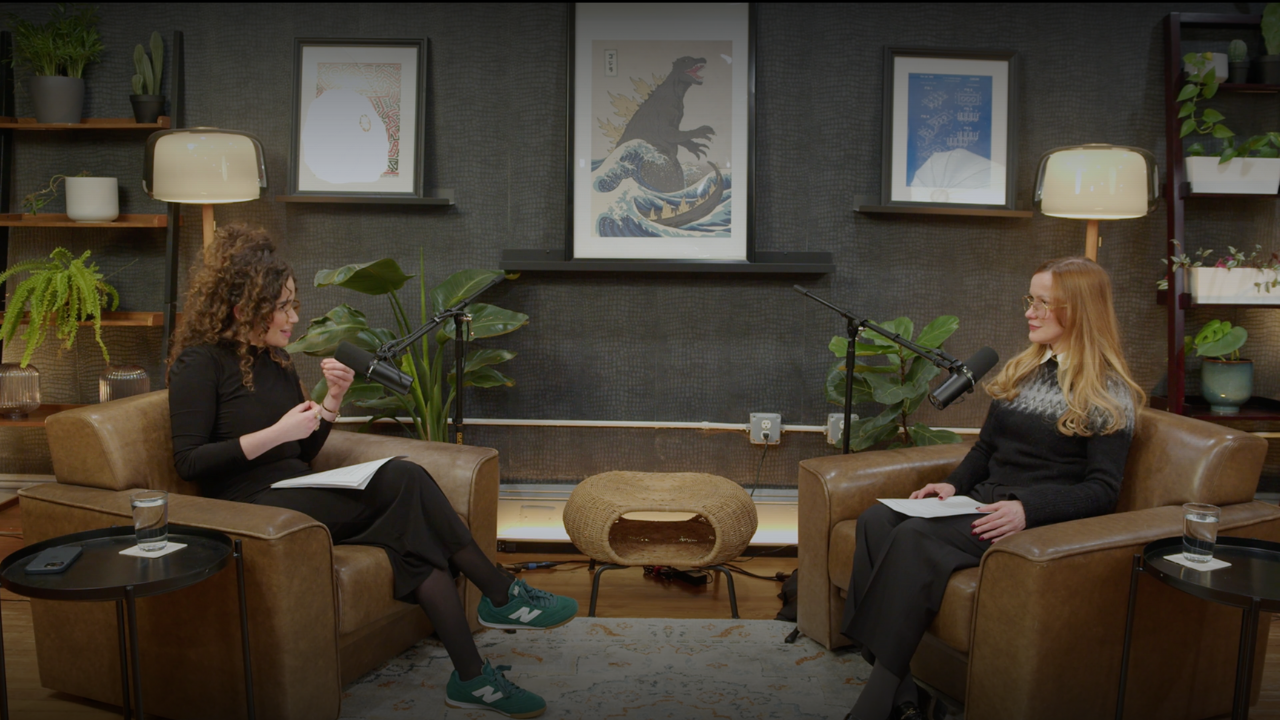How Trauma-Informed Spaces Can Transform Communities

Designing for Healing: How Trauma-Informed Spaces Can Transform Communities
Can Space Be a Catalyst for Connecting & Healing?
In Connected Conversations Episode 24, we meet Ghizlaine Mallek, a trauma-informed community space designer whose work bridges the fields of wellness, architecture, and emotional healing.
Born in Algeria and shaped by the scars of war and migration, Ghizlaine brings personal experience to the professional realm—designing spaces that don't just look good, but feel safe. In this episode, she explains how community spaces, when built with intention, can soothe trauma, regulate emotions, and restore identity.
Whether you're a policymaker, educator, urban designer, or simply someone navigating your own emotional world, this episode offers a profound look into how physical environments influence mental health, culture, and connection.
Her Father's Story: A Personal Origin of the Mission
Ghizlaine’s philosophy is rooted in lived experience. She recalls her father, a man who fled Algeria during the civil war. Though physically safe after migration, he suffered in silence—emotionally detached and carrying invisible wounds.
“It wasn’t until I was older that I realized he never got to heal,” she says. This shaped her belief that emotional safety must be built into the spaces we live in. Her work is, in many ways, an extension of her family's story: a quiet rebellion against environments that don’t allow space for grief, identity, and emotional recovery.
What Are Community Spaces—and Why Do They Matter?
Ghizlaine describes community spaces as shared environments where people connect, process, and belong—from schools and libraries to shelters, courtyards, clinics, and cultural centers.
They are more than buildings. They are emotional containers.
If poorly designed, they can reinforce isolation or discomfort. But with trauma-informed design, they become places of regulation, inclusion, and healing—particularly for communities experiencing stress, displacement, or generational trauma.
Multilingualism & Cultural Identity
In her work with refugee and immigrant communities, Ghizlaine often designs for spaces where up to 42 languages are spoken. She herself is multilingual—fluent in English, Arabic, French, and Derja.
This linguistic fluency enhances her approach to culturally responsive design. She emphasizes that language is part of how space communicates safety and belonging, particularly in diverse and marginalized populations.
The 5 Core Principles of Trauma-Informed Design
-
Safety – Creating environments that allow the nervous system to settle.
-
Agency – Empowering people to adjust their space (lighting, layout, sensory input).
-
Connection – Designing for intentional interaction and community.
-
Identity – Spaces should reflect culture, heritage, and personal history.
-
Nature – Using natural materials, light, and biophilic elements to regulate stress.
These aren’t aesthetic choices—they’re mental health strategies built into the walls.
Design as Advocacy, Not Just Decoration
Ghizlaine’s work challenges top-down approaches in design. She advocates for community-led planning, where people shape the spaces they occupy.
She encourages collaboration between designers, city planners, therapists, and residents, arguing that trauma-informed design should be written into policy—not just considered a luxury or trend.
When communities have agency over their environment, they also reclaim power, dignity, and healing.
Everyday Design Tips for Emotional Safety
Not a professional designer? No problem. Ghizlaine offers simple practices to create a more regulating and emotionally attuned environment at home:
-
Declutter your space – Clarity outside supports clarity inside.
-
Use calming, natural materials – Wood, clay, and soft textures can soothe the nervous system.
-
Rearrange your layout – Notice how your space makes you feel and adjust for better flow.
-
Bring in nature – Plants, sunlight, and earth tones ground the body and mind.
Healing Starts Where You Are
Episode 24 is a powerful reminder that healing doesn't always begin in therapy—it can begin in how your chair faces the door, the color of your walls, or whether your space reflects who you are.
For Ghizlaine, design is both resistance and restoration. In communities impacted by trauma, war, or disconnection, a well-designed space becomes a silent ally in the healing journey.
As she says:
“We all carry trauma. Our spaces can either hold us or harm us. It’s time we start designing for what we need.”
You can now watch/listen to the episode:
🟡 Website: https://ad-astrainc.com/podcast/trauma-informed-spaces-designing-for-healing-ghizlaine-mallek
🔴 Youtube: https://www.youtube.com/watch?v=5Z4Ca-cOdhM
🟢 Spotify: https://shorturl.at/JYj0F
⚫ Apple Podcast: https://shorturl.at/x80yu
🔵 Amazon Music: https://shorturl.at/eKrOn



